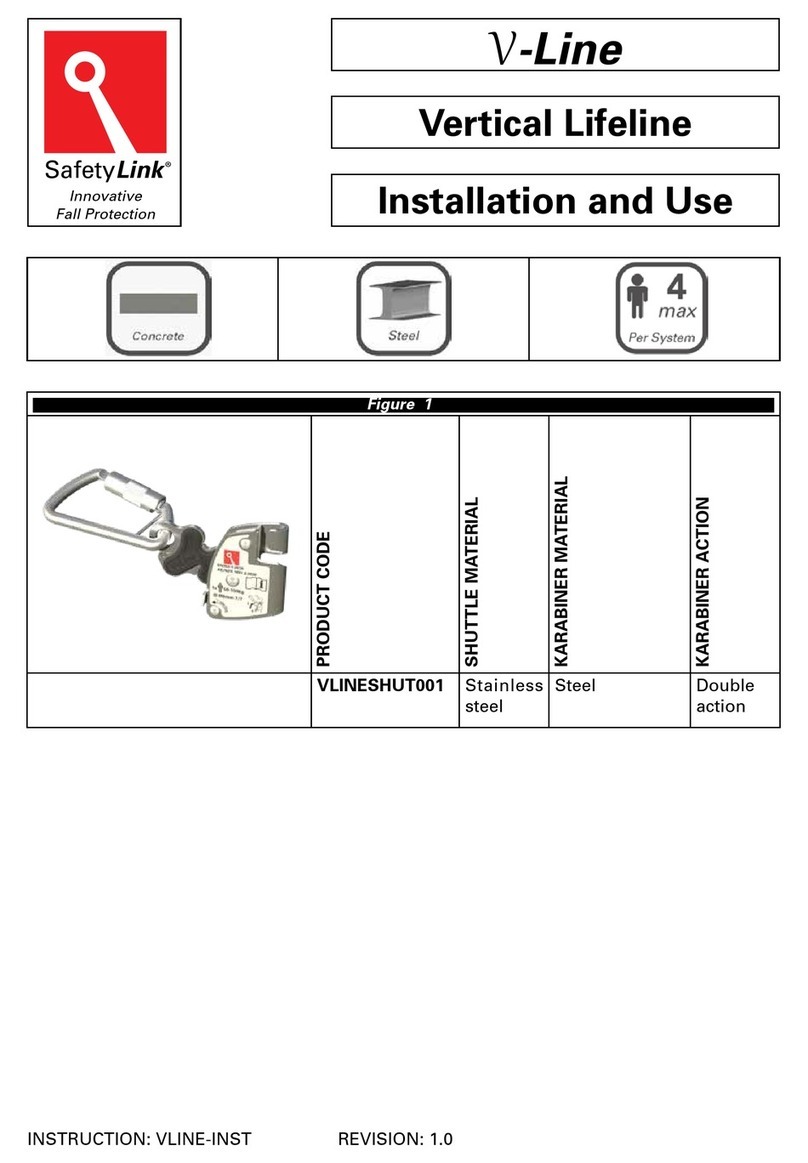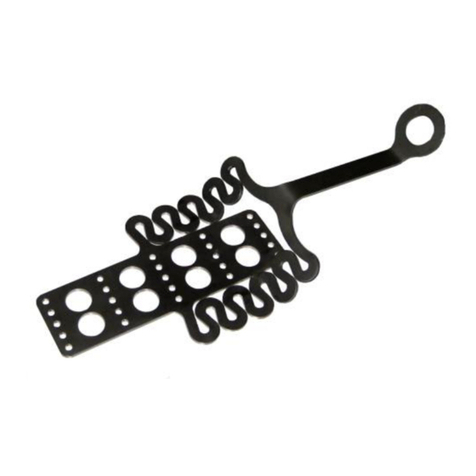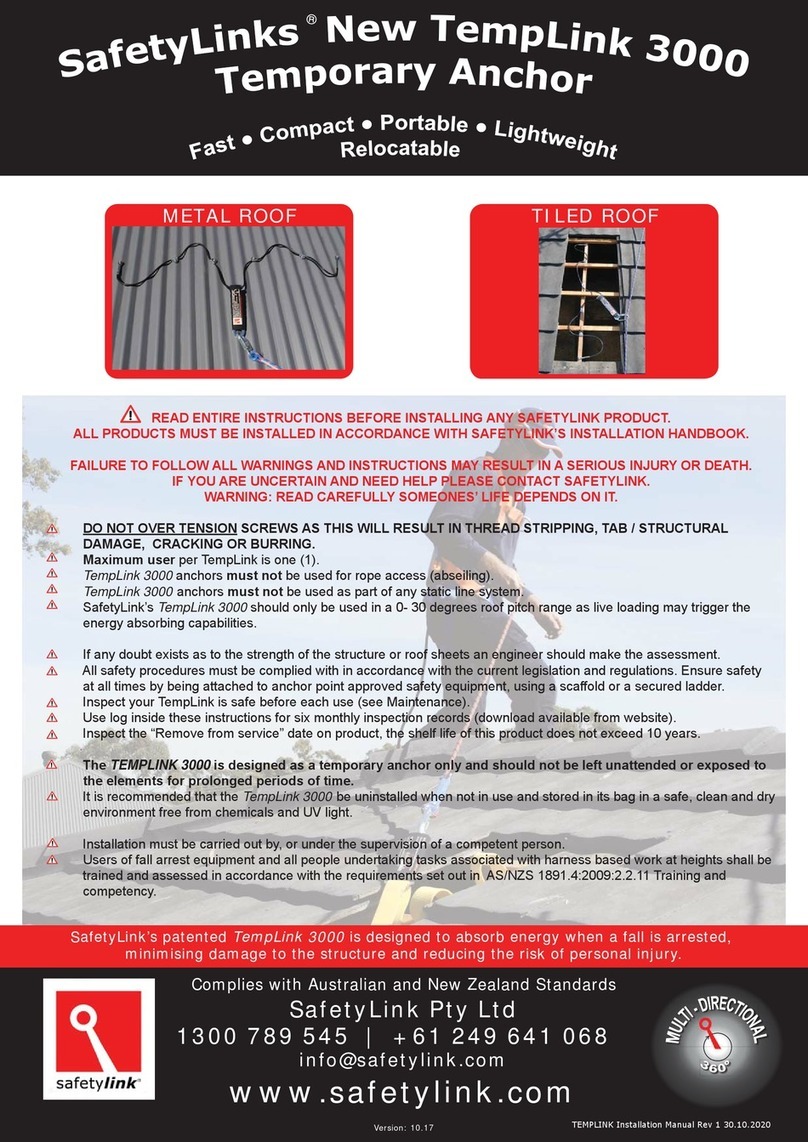Safety Link X-Rail Quick start guide
Other Safety Link Safety Equipment manuals

Safety Link
Safety Link V-Line VLINESHUT001 User manual

Safety Link
Safety Link Classic Tuff-Post Concrete Lifeline System manual

Safety Link
Safety Link TempLink 5000 Installation instructions

Safety Link
Safety Link TileLink System manual

Safety Link
Safety Link TempLink 3000 User manual

Safety Link
Safety Link Frogline Horizontal Lifeline System manual
Popular Safety Equipment manuals by other brands

Lanex
Lanex PB-20 instruction manual

SKYLOTEC
SKYLOTEC ANCHOR ROPES Instructions for use

Besto
Besto Buoyancy Aid 50N Instructions for use

TEUFELBERGER
TEUFELBERGER NODUS Manufacturer's information and instructions for use

Troy Lee Designs
Troy Lee Designs Tbone Product owners manual

Innova
Innova Xtirpa Instruction and safety manual

bolle SAFETY
bolle SAFETY B810 quick start guide

SHENZHEN FANHAI SANJIANG ELECTRONICS
SHENZHEN FANHAI SANJIANG ELECTRONICS A9060T instruction manual

Hiltron security
Hiltron security POWER8E Installation and use manual

Salewa
Salewa MTN SPIKE user manual

Hatco
Hatco B-950P installation guide

Sitec
Sitec TX MATIC operating manual















